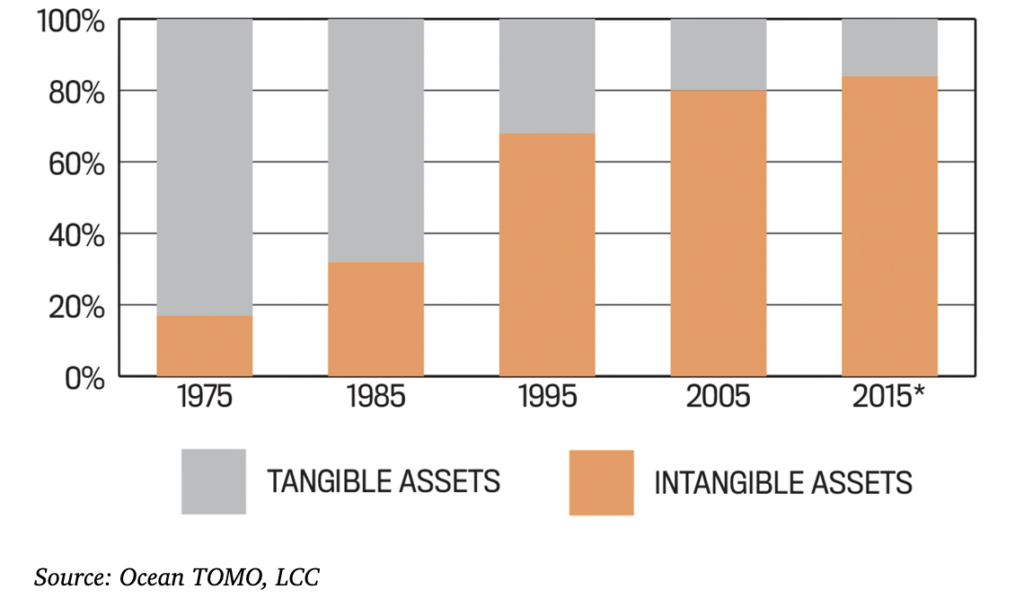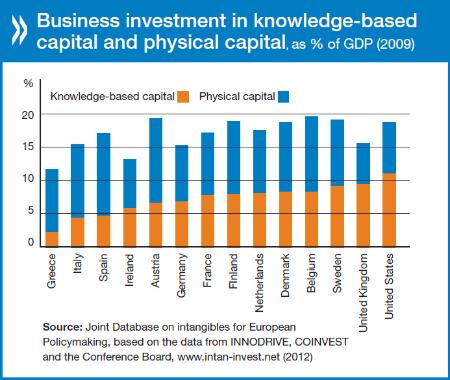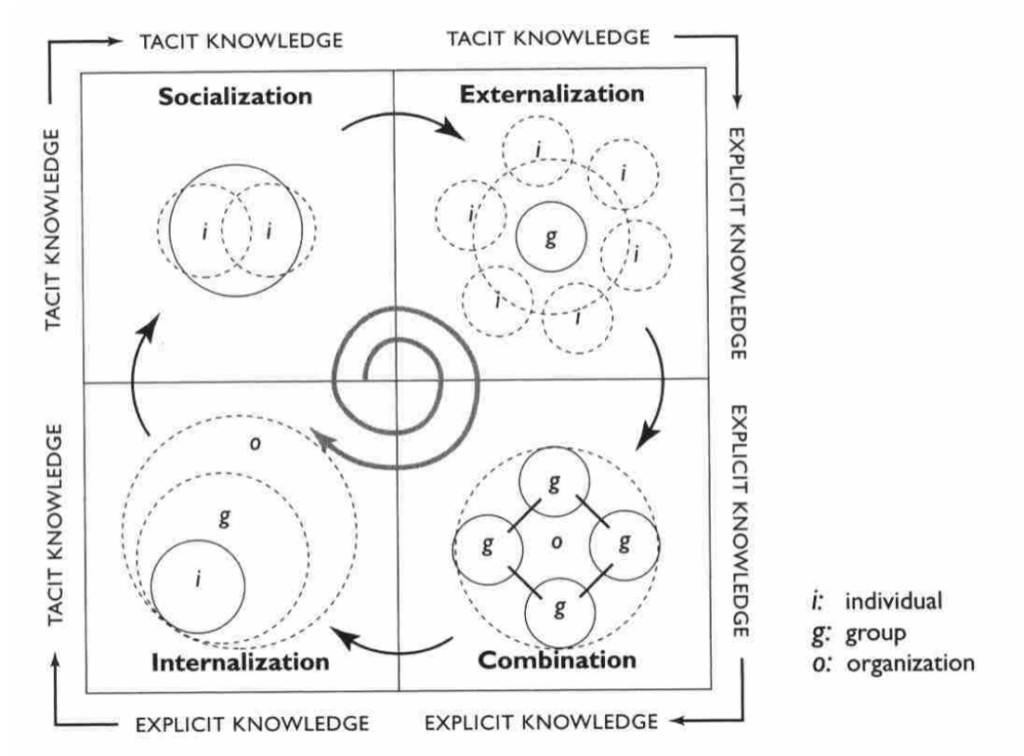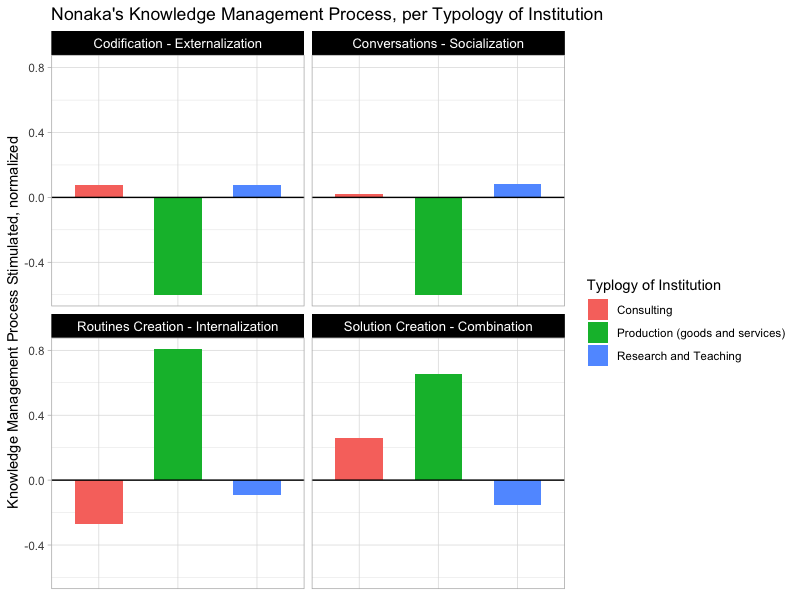The Knowledge-Economy
We already mentioned previously that the importance of knowledge and knowledge management has been rising noticeably in the last decades. Firms and organisations value more and more intangible resources and intellectual capital. More and more competitive advantage is due to the ability of a given company to gain critical insights on the market, as investors know.
According to NYU Stern Professor Baruch Lev, intellectual capital has killed financial reports. For instance, Uber raised $90 million after reporting $79 million in losses. LinkedIn was paid $26 billion from Microsoft in 2016 despite frequent losses. Whatsapp was bought for $19 billion from Facebook in 2014, without generating any revenue.

The reason lies in balance sheets and income statements: in the current digital economy, intangible investments have surpassed plant, property, and equipment as the primary means of capital creation for many US companies. Income statements are believed to be responsible for only 2.4% of stock returns (Govindarajan, Rajopal, Srivastava. 2018). Another fallacy of standard financial accounting is that it misses the network effects that Facebook and Google have generated.

According to Coinvest and the Conference Board, the contribution of investment in intangible capital is relevant for knwoledge wealth, assuming the countries on the right can be called more “developed”
Create Knowledge with Nonaka framework
But how’s knowledge created? What is the critical factor for a company to be wisdom-driven? We mentioned in a previous article the significant contribution of Nonaka Takeuchi in the discussion.
According to the oriental approach, everything starts with the concept “ba“. Ba is a shared space that enables knowledge creation. It transcends the idea of the platform: it is a shared space, both mental, virtual and physical. The key concept is that once two people join a shared space (ba), they can learn from each other experiences, and their experience becomes new information by letting ba apart and being communicated. Ba can be thought of as knowledge sharing like project teams, working groups, informal circles, email groups, temporary meetings, etc. Consequently, joining a ba means getting involved in one’s perspective and transcending it to let rationality and intuition mingle to form creativity.
As mentioned before, there are two kinds of knowledge: explicit and implicit. The first one can be expressed in written forms (numbers, words, data, scientific formulae, manuals, et cetera), while tacit knowledge is often called sticky: it is highly personal and impossible to write down entirely or teach straightly.
According to Nonaka, knowledge creation is a process in which there is a continuous interaction between explicit and implicit knowledge that leads to a virtuous cycle of wisdom generation. In particular, there are four distinct moments of knowledge creation that can be appreciated in the figure below.

At first, socialisation is when two individuals share tacit knowledge and can be both a conversation or implicit joint activities. Empathy is a critical ingredient for knowledge sharing. In practice, socialisation happens, for example, during dialogues among colleagues or suppliers, and customers. The act of sharing tacit knowledge is a way of creating the ba, the common ground.
In the second place, externalisation is when tacit knowledge is translated into a written form. Of course, explaining to a kid how to ride a bike would not make him a hundred percent proficient in bike riding, but it is part of the process.
Thirdly, the combination is when knowledge is made available because the organisation looks for new solutions for spreading and creating more usable knowledge generated.
At last, knowledge is internalised in everyday practice thanks to training, exercises, learning by doing, et cetera.
Applying theory to practice
If you are still in the land of un-concreteness, here’s an example of how to apply this theory to have a better perspective of knowledge management in a creation. The model used is always the SoBigData network mentioned in the last article (super-short summary: a set of 40 organisations collaborating to a European project that has as output the creation of a data mining platform for European researchers).
The survey respondents have asked the following questions, expecting a numerical answer ranging from 1 to 5:
- The project is going to push my organisation to have more internal conversations
- The project is going to motivate my organisation to have more conversations with external actors
- The project is going to incentivise my organisation to codify my knowledge
- The project is going to make my organisation build new routines and internal procedures
- The project is going to need my organisation to put often in my place our problem-solving capacity
The chart shows the answers, normalised and grouped by typology of institutions.

First of all, production tends to turn explicit knowledge, being above average in the below quadrants. Probably, it is a reflection of their executive job, very focused on the output. On the other hand, consulting excels in finding solutions, which is the activity that a consulting firm tends to do for its clients. Finally, research and teaching institutions tend to codify and share knowledge, following inner university mission. In general, each category of organisation seem to reflect their core activities in their knowledge creation processes.
And now what?
Despite being strongly academic, I believe that this piece of theory can suggest effective policy-making for managers and team leaders. It is a no-brainer that a company should do its best to foster knowledge creation in its organisation. Still, the idea of the framework is the improve the organisation to catalyse the four phases.
You could push to have common areas and meetings for socialisation. You could ask staff to codify their process to enhance externalisation. The combination can be solved by creating more challenges and problem-solving activities, and finally, practice building is helpful for internalisation.

Leave a Reply